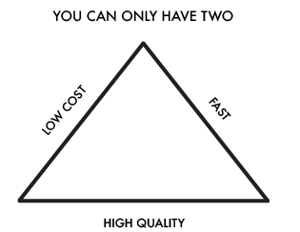How to design your social video strategy for real business impact

You don’t need an advanced business degree to know that social video is everywhere these days. Even if you’ve never worked in marketing or read any marketing blogs, you’re probably already familiar with social video as an online consumer. At its simplest, social videos are videos that are explicitly made for sharing. Social video can refer to a wide range of content, from an individual’s live stream to multimillion-dollar Superbowl ad.
Why is it so important? Social video is where the most powerful players, the latest technology, and money all confront each other, and as a result, shape our everyday lives and the way we consume information on the internet. This collision between broadcasters, creators, and platforms has transformed the media and entertainment industries in ways we still haven’t grasped, and it will continue to do so for decades to come.
As a relatively new marketing channel, trends and best practices are constantly evolving, but one thing is clear: whether you’re in marketing, editorial, or video production, you need a clear social video strategy to succeed in the digital world. At Wildmoka, we’ve put together this short article to guide your thinking and to help you start ticking the boxes.
Understand Your Audience
Because the most successful social videos are short (under 30 seconds), knowing your audience is of critical importance. Human attention spans are shrinking every year, so you have to get their attention immediately. The rise of social video correlates with another “rise” we’ve all heard about: the rise of millennials. According to Forbes, millennials will be roughly 50% of the USA workforce in 2020 and 75% of the global workforce by 2030. Brands that ignore social video could be left out of one of the biggest market opportunities in the coming decades. Defining a social video strategy should go hand in hand with defining your audience. If you haven’t already, complete an audience profile and customer journey map.
Platforms & Objectives
According to research company Tubular Insights, the most widely used social video platforms in 2018 are:
- YouTube
- Musical.ly
- Verizon
- Twitch
In fact, YouTube is the second most-visited site in the world after Google. It is a good idea to develop a video production checklist for each platform you plan to distribute social videos.
- Should video be vertical or square?
- Do videos need captions?
- Will you embed CTAs into the video, or rely on CTAs built into the platform?
Did you know that stories, the short videos that users across Facebook, Snapchat, and Instagram create to document their day and share with followers, are set to surpass posts already in 2019? Businesses are using stories to have a direct conversation with their audience. For companies trying to get more millennial eyeballs on their content, stories are an excellent way to showcase your brand as approachable and real.
 Just as stories are an incredible way to engage directly with your target audience, they also open up your brand to potential risk. Video teams must be equipped with technology and tools that help them worry less about ensuring quality and more about creating engaging content. Video editing automation software can help teams quickly compile, design, and edit clips for use on social media.
Just as stories are an incredible way to engage directly with your target audience, they also open up your brand to potential risk. Video teams must be equipped with technology and tools that help them worry less about ensuring quality and more about creating engaging content. Video editing automation software can help teams quickly compile, design, and edit clips for use on social media.
Production and marketing teams must be aligned on objectives in order to have a social video strategy that will yield results. Be clear on which platforms you are creating for, and don’t strive for one-size-fits-all content for use across every platform. Facebook, Instagram, YouTube, and Twitch all have their unique selling points and requirements.
Be Realistic About Your Resources
Social videos are videos that are highly engaging, usually short, and tailor-made for different audiences and platforms. It will be helpful to first assess if your video production team is optimized for creating social videos. Do you move quickly, or are there still many bottlenecks between pre and post-production as well as between editorial, marketing, and operations teams?
 Try holding a workshop with your team to figure out where you currently stand. First, do a Day-In-The-Life exercise to uncover the pain points in the video ideation, production, and editing process.
Try holding a workshop with your team to figure out where you currently stand. First, do a Day-In-The-Life exercise to uncover the pain points in the video ideation, production, and editing process.
Some questions to ask:
- What tasks are still manual? If automated, how did they become automated?
- What are the turnaround times at every stage of the process?
- What hardware, software tools are currently in use? Who uses them, and how much?
Document the team’s responses to these questions into a workshop summary, and keep it with you wherever you go. OK, maybe that’s overkill-- but refer back to it when you’re having trouble remembering your objectives, when you have a miscommunication, or when you feel stuck.
Reuse Old Content
Many publishers are sitting on a treasure trove of content, but don’t have the resources or time to find the stuff that’s worth sharing (a.k.a worth becoming a social video!). Video automation platforms like Wildmoka can sift through video archives and identify, for example, critical moments during a football match, compiling them into bite-sized clips for quick compilation and distribution. These clips are perfect for social video, as these highlight reels can easily be targeted at their fanbase and can quickly capture the attention of viewers.
Go Live and Keep Calm

One of the fastest growing areas of content creation is live streaming. But one mistake companies or creators often make is that once the broadcast is over, the content isn’t packaged or used to its fullest potential.
Wildmoka is building features to tackle this issue, and one of its recent exciting developments is a partnership with Wochit. While Wochit specializes in streamlining the content creation process, Wildmoka makes the content packaging and distribution process a breeze. For example, journalists at some of the world’s most important media brands can now take their own reporting videos from the field and integrate seamlessly with footage from licensed curators. Moreover, as ads become increasingly native, broadcasters and advertisers will need tools that allow for a seamless visual communication experience.
Social Video: Your Story, Your Success
So, if you’re ready to take on social video and incorporate it into your strategy, answer some of these questions, do some of these exercises, and get the best tools on the market to ensure you set you and your team up for success!